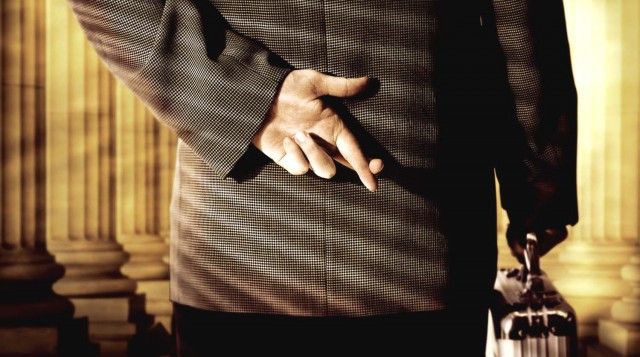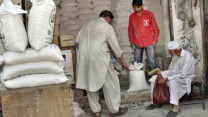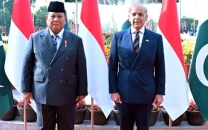Unfulfilled promise, uncontrolled poverty
The government failed to keep up its promise of restricting inflation to single-digits by the end of the current fiscal year.

At the time of the announcement of the federal budget 2009-10, Minister of State for Finance and Economic Affairs, Hina Rabbani Khar promised 170 million people that the prices of goods and services would not increase more than 10 per cent through the fiscal year 2009-10.
On 13 June 2009, she stated, “Madam Speaker! It is now universally acknowledged that reducing inflation is the best recipe for reducing poverty. Through the efforts of your government, inflation declined from 25 per cent to 14.4 per cent in May, 2009. Inshallah, it is expected to be in single digit by the end of the next fiscal”.
The inflation did come down to single digits but only in October when it was recorded at 8.9 per cent. According to a survey of the Pakistan Institute of Development Economics, the average inflation till June will remain over 15 per cent, at least 3 per cent more than the revised government projection of 12 per cent. Inflation rose to 13.3 cent in April over a year ago.
Independent economists say that under the umbrella of the International Monetary Fund on one hand the government is tightening the fiscal and monetary policies to curtail the demand but on the other it is increasing the prices of electricity and fuel to meet the IMF conditionality.
“The double-digit inflation is cost-pushed, not demand-led”, said Dr Hafeez Pasha, former Finance Minister. In the words of Shaukat Tarin who was the Finance Adviser and responsible for this year’s policies, “the double-digit inflation was the ripple affect of increase in the prices of the electricity and fuel”.
Hafeez Pasha says that there are contradictions in the IMF programme. “The programme is designed to limit aggregate demand but actions like increase in the prices of electricity and fuel are contrary to the spirit of the programme”.
He said by taking out the components of transport and communication and fuel and lighting from the basket of goods and services the rate of the inflation would be below 9 per cent. Dr Pasha said during the last one year the fuel prices increased by 40 percent. According to the IMF’s Memorandum of Economic and Financial Policies, the electricity prices were increased by 60 per cent from March 2009 to March 2010.
Dr Pasha also said the government’s decision to increase wheat prices by 100 per cent was wrong. The decision was taken two years back but the affects were still visible and would remain so for at least another two years. “Decline in wheat prices in the international market is not reflected in domestic prices”.
According to a report of the Institute Public Policy the tight monetary policy has limited the money supply in the market. In first ten months the money supply in the market increased by just 5.5 per cent, which hurt the businesses.
Dr Salman Shah, former Finance Adviser and the caretaker Finance Minister, takes the stock of the situation by saying, “inadequate administrative measures resulted into double digit inflation, and the major factors were wheat and energy prices”.
He said the recipe was “ease interest rates and let the economy grow”.
The Asian Development Bank in its latest report about the state of the Pakistan economy writes, “High double-digit inflation diminished any competitive advantage exports might have gained due to 16.4 per cent depreciation in the average nominal effective exchange rate in FY2009”.
Former Finance Minister Shaukat Tarin, who left charge of the exchequer in February 2010, defended the IMF programme but admitted that due to policy failures the target cannot be achieved.
He figured out four main factors of double-digit inflation. Firstly, electricity prices were increased even more than initial estimates due to continuation of subsidies and later on the attempt to fully recover the cost.
The government did not allocate any budget for electricity subsidy and decided to increase the tariff by 17 per cent in phases. However, Prime Minister Syed Yusaf Raza Gilani decided to defer the power increase for a few months that has resulted into a planned 24 per cent increase in tariff out which 17 per cent has already been implemented in two phases.
Shaukat Tarin said that the power distribution companies did not reduce losses rather the losses went up by 2 per cent.
Secondly, he said, the donor pledges did not materialise and the government borrowed massively from the State Bank of Pakistan that resulted in aggregate monetary overhang. He added that the provincial governments also did not retire loans worth over Rs 185 billion taken for commodity finances, which also created excessive liquidity in the market.
Thirdly, Shaukat Tarin said that the fiscal deficit should have been restricted to 3.4 per cent of the total size of the economy due to non-materialisation of foreign assistance. But contrary to that the deficit will actually be in excess of 5 per cent of GDP. And finally, the food prices also remained in double-digits due to surge in international prices, he said.
The government has again estimated inflation at 9.5 per cent for the financial year 2010-11. An insider says that the target is deliberately kept on the lower side to discourage people expectations of higher inflation during the next fiscal year.
Published in The Express Tribune, June 21st, 2010.



















COMMENTS
Comments are moderated and generally will be posted if they are on-topic and not abusive.
For more information, please see our Comments FAQ